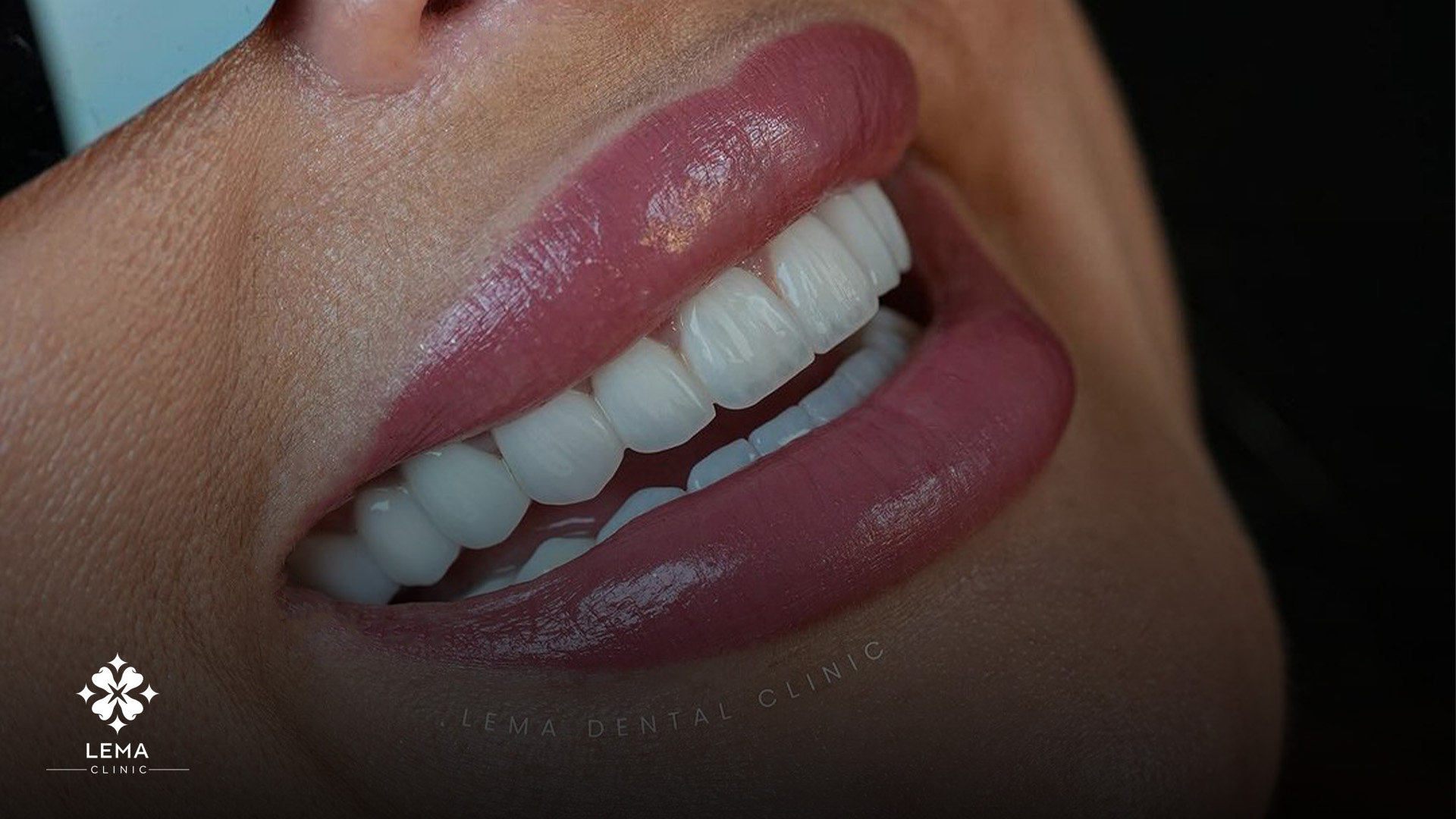Composite Bonding In Dentistry
Composite bonding is a cosmetic dental procedure in which a tooth-colored resin material is applied to improve the appearance of teeth by repairing chips, gaps, or discoloration, providing a natural and aesthetically pleasing result.

Composite bonding is a dental procedure used to improve the appearance and functionality of teeth. It involves the application of a tooth-colored composite resin material to the teeth, which is then shaped and polished to match the surrounding teeth, enhancing the overall smile.

This procedure is commonly used for several purposes:
- Repairing Chipped or Cracked Teeth: Composite bonding can effectively restore the appearance of teeth that have been damaged due to injury or wear.
- Closing Gaps: Small gaps between teeth can be filled in with composite bonding, creating a more uniform and aesthetically pleasing smile.
- Improving Tooth Color: Teeth that are discolored or stained and cannot be corrected with teeth whitening can benefit from composite bonding. The resin can be closely matched to the natural color of the patient’s teeth with teeth whitening.
- Changing Tooth Shape: Teeth that are misshapen or naturally too small can be reshaped with composite resin to create a more harmonious look.
- Protecting Exposed Roots: When gums recede and expose the roots of the teeth, composite bonding can be applied to protect these areas from sensitivity and decay.
The process of dental bonding is relatively straightforward. It typically requires no anesthesia (unless it’s being used to fill a decayed tooth) and is less invasive than other forms of dental restoration like crowns or veneers. The dentist will choose a resin color that matches the natural teeth and then apply the resin to the prepared tooth surface. The resin is then molded and smoothed before being hardened with a curing light.
Finally, it’s polished to give a natural appearance. Composite bonding is a popular choice due to its cost-effectiveness and the speed of the procedure, often completed in a single visit. However, it’s important to note that while composite resin can improve the appearance of teeth, it doesn’t have the same strength as natural teeth and may need to be replaced or repaired over time. Proper dental hygiene and regular check-ups are essential to maintain the results of composite bonding.
Step By Step Composite Bonding
Composite bonding is a straightforward and minimally invasive cosmetic dental procedure. Here’s a step-by-step overview of how it’s typically performed:
- Color Matching: The dentist begins by selecting a composite resin color that closely matches the natural color of your teeth.
- Tooth Preparation: The tooth surface is prepared to receive the bonding material. This usually involves lightly roughening the surface of the tooth with a gentle phosphoric acid solution, which helps the bonding material adhere.
- Application of Composite Resin: The dentist then applies the composite resin to the prepared tooth. This resin is a putty-like material that can be easily shaped and sculpted.
- Molding and Shaping: Once the composite is in place, the dentist will mold and smooth it to the desired shape. This step is crucial as it determines the final appearance of the tooth.
- Hardening the Composite: After shaping the resin, the dentist uses a special light, typically an ultraviolet light, to harden and set the material. This process is known as curing and takes only a few minutes.
- Polishing and Finishing Touches: Finally, the bonded tooth is polished to match the sheen of the rest of the teeth. This step ensures that the bonding blends seamlessly with the natural teeth, both in shape and in shine.
The whole process usually takes between 30 to 60 minutes per tooth and can be completed in a single visit. One of the advantages of composite bonding is that it requires minimal removal of the existing tooth enamel compared to other cosmetic procedures like dental veneers or crowns.

Composite Bonding Aftercare
Composite bonding is a popular cosmetic dental procedure that requires careful maintenance to ensure its longevity and effectiveness. Unlike more invasive procedures, composite bonding involves adding a resin material to the tooth’s surface, which can be more susceptible to staining and damage if not properly cared for.
Firstly, it’s essential to maintain good oral hygiene. Regular brushing and flossing are crucial to prevent the buildup of plaque and tartar, which can affect not only the health of your teeth and gums but also the appearance and integrity of the bonding material.
Using a non-abrasive toothpaste and a soft-bristled toothbrush is recommended to avoid scratching the composite material. Regular dental check-ups are vital for maintaining composite bonding.
Expertise in Composite Bonding Lema Dental Clinic
Lema Dental Clinic Istanbulhas established a reputation for its excellence in composite bonding, a testament to its commitment to providing top-notch dental care. Their success in this specific treatment is a reflection of their broader expertise in a wide range of dental services.
At Lema Dental Clinic Istanbul, the team of skilled dentists and dental professionals specializes in composite bonding, employing advanced techniques and high-quality materials to ensure the best aesthetic and functional results. They understand the importance of a natural-looking smile and work meticulously to match the composite material to the natural color of patients’ teeth. Their attention to detail in shaping and polishing the composite ensures that it blends seamlessly with the surrounding teeth, enhancing the overall appearance.
Beyond composite bonding, Lema Dental Clinic Istanbul offers an extensive array of dental treatments. From preventive care like regular cleanings and check-ups to more complex procedures such as root canals, crowns, and bridges, they cover all aspects of dental health. Their expertise also extends to cosmetic dentistry, including teeth whitening and veneers, catering to patients seeking to improve their smile’s aesthetics.






I’m thinking about getting composite bonding to fix some small gaps in my teeth. How long does the procedure take?
Hello Lily,
The composite bonding procedure typically takes between 30 to 60 minutes per tooth and is often completed in a single visit. It’s a quick and effective way to improve your smile.
What kind of maintenance is needed after getting composite bonding?
Hello Liam,
Maintenance includes good oral hygiene practices such as regular brushing and flossing, using non-abrasive toothpaste, and avoiding foods that can stain. Regular dental check-ups are also important to ensure the bonding remains in good condition.
Is composite bonding a good option for changing the shape of my teeth?
Hello Ella,
Yes, composite bonding is an excellent option for reshaping teeth. It can address issues like misshapen or small teeth, creating a more harmonious and aesthetically pleasing smile.